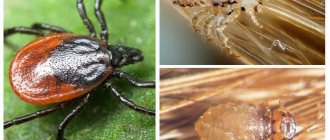Many loving dog owners treat them like full-fledged members of the family. This leads to pets being treated to food from the common table. Most people love treats and share them with their pets. You need to know that chocolate is unacceptable in the diet of dogs, as it is, in fact, poison for them. Consuming this product may cause diarrhea, vomiting and heart attack. Even if there are no external signs of poisoning, eating it will not pass without leaving a trace on the animal’s body.
- 1 Mr. Tail Warns: Why Chocolate Is Bad for Dogs
- 2 Types of chocolate by composition
- 3 Toxic dose of chocolate for dogs
- 4 Signs of a dog being poisoned by chocolate
- 5 What measures to take
- 6 Acceptable treats
Mr. Tail Warns: Why Chocolate Is Bad for Dogs
Dogs are natural carnivores and their digestive tract is simply not designed to digest chocolate. They also do not have enough special enzymes that process sugars, fructose and other carbohydrates, which as a result leads to disorders of the gastrointestinal tract. In addition, chocolate contains some substances that are harmful to the pet's body. Among them are:
- Theobromine. The elimination period of this substance is about 18 hours. It has a similar effect to caffeine, that is, it stimulates the central nervous system, which leads to increased heart rate and heart rhythm disturbances in dogs. Due to its diuretic effect, it can cause dehydration in your pet.
- Sugar. Its high content in chocolate is detrimental to the pet’s pancreas; it is simply not able to cope with such an amount. This, in turn, can become a trigger for the development of diabetes. It also causes weight gain, liver and kidney failure.
- Caffeine. It has a stimulating effect on the central nervous system, which leads to aggressive behavior of the animal. It also causes addiction to the product.
- Tannins. They lead to all kinds of gastrointestinal diseases, and also have a damaging effect on the nerve cells of the brain and spinal cord.
- Various dyes and flavors. They are not always of natural origin, which leads to the formation of allergic reactions.
- All kinds of additives, which include: raisins, nuts, coconut flakes, etc. The animal’s body is also unable to digest them, as a result of which they have a negative effect on the functioning of the endocrine glands.
From the author: My husband’s mother told me that she was once sitting in the veterinarian’s office, waiting for her turn. And suddenly a doctor comes out of the office, holding something like a red rat in his hand, and says: “I absolve myself of all responsibility. This puppy was fed only chocolate all his life from birth, citing the fact that he liked it.” These are the consequences of dogs eating chocolate. Unfortunately, we don’t know what happened to that puppy. But we can save our pets from our rash decisions.
Pregnant, lactating and puppies
Since the effect of the substance depends on the weight of the animal, young animals are most susceptible to poisoning. Curiosity leads kids to the most secluded corners of the house, including those where something edible is left. Although in the history of dog breeders there have been cases where puppies ate chocolate and subsequently recovered, all they had to do was wash their stomach.
According to dog owners , in some cases chocolate and other sweets are even beneficial. Sugar is a source of quickly digestible carbohydrates. Therefore, it is recommended to give it to dogs during childbirth. In the intervals between the birth of puppies, mothers can drink sweet water and eat a few pieces of milk or white chocolate.
Toxic dose of chocolate for dogs
Some dog owners naively believe that giving a small piece of chocolate occasionally will be safe for their pet's health, but this is absolutely not the case. A pet can become poisoned by eating this sweet in an amount of 15 mg/kg of weight, and 100 mg/kg will lead to the death of the animal.
In addition, pets develop an addiction to this product, and they can steal the tile from the owner and eat it completely. This could end tragically. Therefore, veterinarians and experienced breeders are unanimous in their opinion - chocolate should never be given to animals.
Signs of a dog being poisoned by chocolate
Symptoms of chocolate poisoning do not develop immediately, but after 3-4 hours after eating. Among the most characteristic signs of intoxication are:
- increased activity, excessive excitement;
- vomiting, diarrhea;
- the appearance of severe thirst;
- increased frequency of urination;
- increased breathing;
- twitching in the limbs;
- confusion;
- loss of orientation in space;
- increased body temperature;
- bloating (if the chocolate was consumed together with the wrapper, which led to obstruction of the intestinal lumen and the development of intestinal obstruction);
- disturbances in the functioning of the heart.
If specialized assistance is not provided during this period, convulsions appear, then the pet falls into stupor (a pre-comatose state characterized by loss of consciousness and lack of response to stimuli) and coma. This is followed by death caused by the development of acute heart failure and failure of internal organs and systems.
Therefore, it is important to seek veterinary help at the clinic or call a specialist at home when the first symptoms of poisoning appear. Only a doctor will be able to correctly determine the severity of the pet’s condition and provide the necessary assistance, thereby saving his life.
Providing first aid to a pet
The main rule of first aid at home is that the dog should not be given antiemetics for poisoning from sweets. This is due to the fact that cocoa and other substances dangerous to the body must be eliminated from the body, and not accumulate in it. On the contrary, the animal’s gag reflex is stimulated. To do this, use a solution of soda or table salt. Pour half a liter of water into a bowl, and then pour two tablespoons of salt or soda into it. Most likely, a weakened dog will not want to drink this liquid. Then you need to pour the solution into the animal’s mouth.
When you already understand what will happen if you give your dog chocolate and have taken the first measures, you need to give it sorbents. They can smooth out the consequences of poisoning and normalize the functioning of the stomach. Activated carbon is considered optimal for pets. Immediately after, you should take your pet to the clinic. You especially need to hurry if you have a small individual. This is due to the fact that they perceive chemicals more acutely.
What measures to take
If your pet has eaten chocolate, you must immediately provide first aid without waiting for the product to be absorbed. It is important to induce vomiting. To do this, prepare one of the solutions:
- From soda or salt. 1 tablespoon of dry substance is dissolved in 200 ml of water.
- From hydrogen peroxide diluted 1:1 with water.
One of the prepared solutions is poured into the animal’s mouth using a syringe without a needle at the rate of 1-5 ml per kilogram of weight.
After vomiting, it is important to give absorbent agents. For example, Activated or White Carbon, Polysorb, Enterosgel, etc.
After these manipulations, it is worth showing the dog to a veterinarian to evaluate the effectiveness of the measures taken and, if necessary, carry out additional ones aimed at relieving intoxication and improving the pet’s condition.
If the fact of eating chocolate was not noticed, but the dog showed signs of intoxication, it is better to immediately seek help from a specialist. Since the above home methods may no longer be effective and more effective medications and procedures will be required.
Consequences
So, treating your pet with a piece of white chocolate or chocolate candy, at first glance, is not so scary. But the problem is that most dogs become devoted fans from the moment they try this treat. And subsequently, as soon as the owners gape and leave a bar of a sweet product or a box of chocolates in a visible place, it will be opened and eaten in the blink of an eye.
By the way. If the amount of theobromine in the chocolate destroyed by a pet does not exceed the critical norm for the animal, obvious consequences may not occur. At most, the dog faces a mild stomach upset.
If a substance is consumed in a dose dangerous to health, the following may happen to a dog:
- severe stomach upset;
- vomit;
- severe diarrhea;
- muscle tremors;
- internal bleeding;
- seizure attack;
- interruptions in heart rhythm;
- heart attack.
Most dogs become his devoted fans
If the dog ate chocolate
The owners are aware that chocolate is not allowed for the pet. But dogs are smart and quick-witted creatures. And now there is only one wrapper left of the chocolate, an empty, torn candy box lies on the floor, and the pet, at first glance, is cheerful, content and active.
Don't flatter yourself. Take the following steps.
- Calculate how much theobromine has entered your pet's stomach.
- Relate this number to the dog's weight.
- Observe its behavior - the beginning of the poisoning process is characterized by the animal's hyperactivity.
- Then activity will give way to lethargy, and signs of gastric distress will appear.
Important! In case of a critical dose, without waiting for signs of poisoning to appear, it is necessary to take the animal to a veterinary clinic.
First symptoms and treatment for chocolate poisoning
Signs of theobromine poisoning
It may happen that wrappers and boxes are not immediately discovered. And the owner still has no idea that the pet has destroyed the family's chocolate stock. But based on the following signs that appear, you can quickly guess that something is happening to the dog.
- Theobromine is a central nervous system stimulant, which means that the animal’s heart rate will accelerate and arrhythmia will begin.
- It is a diuretic, the dog will begin to suffer from frequent urination, which threatens dehydration, despite the fact that the dog will be thirsty.
- Allergies may begin.
- The animal's breathing will become frequent and intermittent.
- Vomiting will begin, and diarrhea may begin.
- During convulsions, coma can develop, and the animal can die.
Help
Self-medication should not be done, since without the intervention of a veterinarian, the pet may be more likely to be harmed than helped. But still, within two hours after the chocolate has been eaten, if dangerous consequences occur, you can try to induce vomiting in your pet, if there is no vomiting. It is also necessary to give him plenty of water to drink.
If your dog has eaten a lot of chocolate, you should immediately see a doctor.
Advice. The main thing is to get the animal to the veterinarian as soon as possible. At the veterinary clinic, he will undergo gastric lavage, and this will help avoid dangerous health consequences.
You can feed your dog crushed activated carbon, one tablet per 10 kilograms of the animal’s weight. Be sure to drink plenty of water. In the future, charcoal should be given to your pet at four-hour intervals to enhance absorption.
Your veterinarian may administer intravenous infusion therapy to dilute the toxin and speed its release.
Also, if necessary, the animal may be prescribed a drug that slows down the heart rate.
Video - Products dangerous for dogs
Other dangers
In addition to theobromine, food chocolate contains many other components that, to a lesser extent, also pose a danger to dog health.
- A lot of sugar - if it is consumed excessively and frequently, the animal can develop diabetes.
- Flavorings – may cause allergies.
- Dyes are also toxins and harmful in large doses.
- Flavoring additives, nuts, and so on, putting a strain on the animal’s pancreas.
Acceptable treats
Many dog owners want to pamper their pets with something tasty. To do this, it is better to use safe products that will not harm the health and life of the pet. Those allowed as treats include:
- Pieces of fruit and berries. Can be used as a treat: apples, bananas, blackberries, raspberries, etc. But it’s better not to give grapes.
- Dried fruits. They are given in minimal quantities, as they contain a high fructose content, which in large doses can disrupt the functioning of the gastrointestinal tract. Raisins are an exception, as they have a detrimental effect on the dog’s body. It should be excluded from the list of given treats.
- Honey. If you are not allergic to this product, you can give 1 teaspoon no more than once a week.
- Seeds and nuts. You can also give, but you should not do this too often, as they can lead to excess weight gain.
It is important to remember that everything is good in moderation and you should not give permitted treats in large quantities too often. After all, not all products that owners eat are safe for their pets. For example, the same chocolate that lifts the mood and is even beneficial for people is not only harmful, but also a deadly product for dogs.











